Vintage photos offer rare glimpse of Mumbai’s 1970s red-light district
- Oops!Something went wrong.Please try again later.
Editor’s Note: Mary Ellen Mark took these images 45 years ago, when strict standards for privacy and photographing vulnerable people, particularly children, did not exist as they do today.
Mary Ellen Mark couldn’t forget Falkland Road.
The late American photographer was known for her ability to put subjects at ease, but connecting with people in the notorious red-light district on the fringes of Mumbai society proved elusive at first.
“For 10 years I tried to take photographs on Falkland Road and each time (I was) met with hostility and aggression,” she later wrote in the foreword to her 1981 book “Falkland Road, Prostitutes of Bombay” (Bombay being the name the British gave Mumbai before its name change in 1995). In it, she recounted her first trips to India’s most populous city from the late 1960s. “The women threw garbage and water and pinched me. Crowds of men would gather around me. Once a pickpocket took my address book; another time I was hit in the face by a drunken man. Needless to say, I never managed to take very good photographs.”
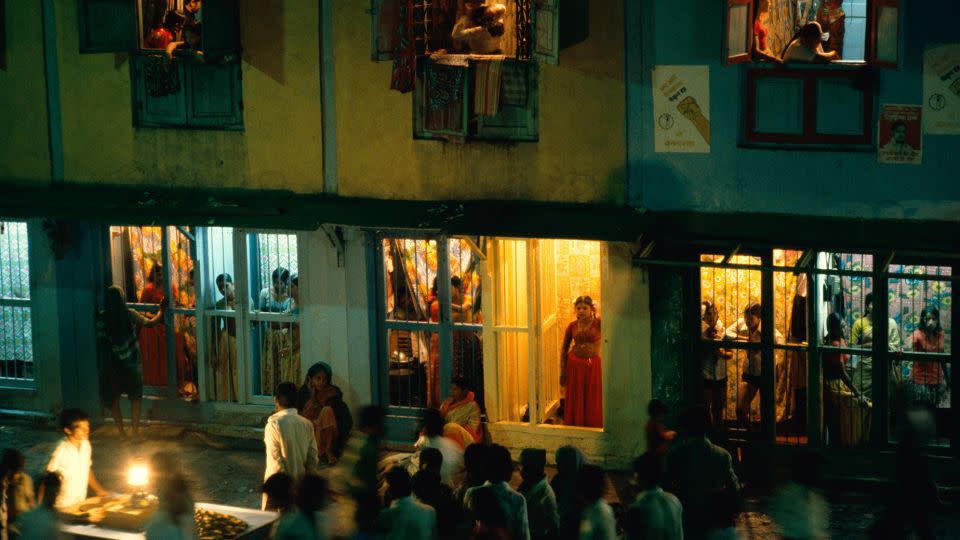
The book, recently reissued with more than 70 of Mark’s images, was internationally lauded for spotlighting the plight of the sex workers, many of whom were peddled by pimps and madams, beaten and vulnerable to diseases. She told the New York Times magazine in 1987 that the book was “meant almost as a metaphor for entrapment, for how difficult it is to be a woman.”
Meredith Lue, president of the Mary Ellen Mark Foundation told CNN via video call that the photographer, who experienced a challenging family life in her youth, found herself gravitating toward — and connecting with — people in vulnerable situations.
“These are often small communities of people, often women or young people that have sort of been left behind or not considered much,” Lue added, saying this is likely what drew Mark to Falkland Road’s sex workers. “A lot of these women didn’t have a family, but they made a family, they found the women who took care of them and the women that I’m sure they would consider sisters.”
As Mark herself wrote of one of her photos’ subjects in her foreword to “Falkland Road”: “Saroja never asked me anything personal. No one did. They wanted to know only my age, why I didn’t wear a brassiere, and why I wasn’t married. I think the reason I was finally accepted was that I was single — alone in the world like they were. One madam told me, ‘We are sisters. You and I are fated for the same life. Every night I say my prayers and I sleep alone.’”
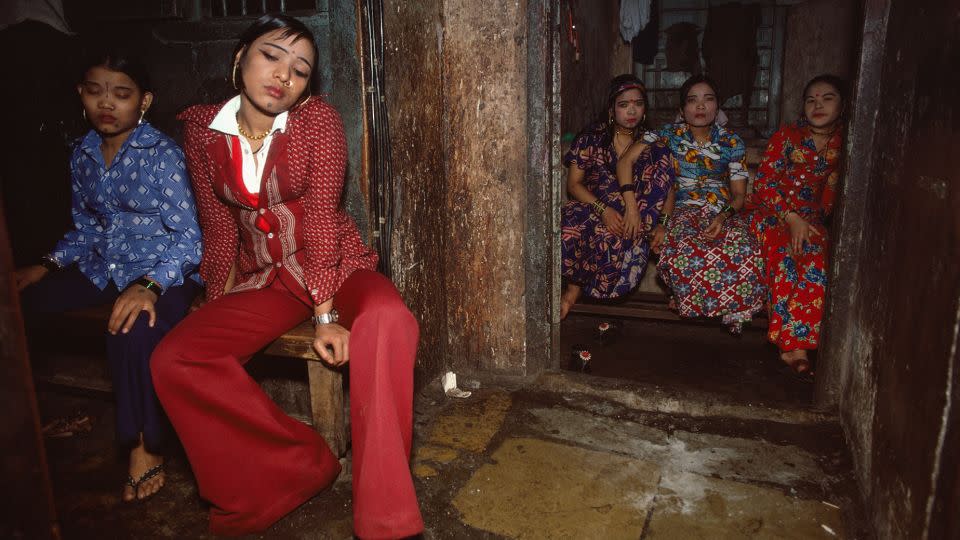
Friends in low places
In 1978 Mark returned to Falkland Road. The night before starting her six-week-long assignment for GEO magazine (a German monthly much like National Geographic), she had a dream in which she was a voyeur hiding behind a bed, watching three sex workers make love. She woke up “somewhat reassured,” continues Mark’s foreword. “Perhaps my dream was a good sign.”
At first, the 1978 trip was much like before: Insults and trash hurled at her as she walked up and down the road. But as the days went by, Mark’s presence piqued people’s interest, and she was invited in.
“It was not a welcoming place, and she just sort of stood her ground. Not being aggressive, but literally just being present,” Lue told CNN. “Her persistence gave (the people on Falkland Road) the sense of like, ’OK, she’s interested and she’s not threatening; nothing bad has happened.’”
First, it was the less inhibited street sex workers who befriended Mark. They often met at the Olympia Café, a favorite haunt for the girls. “I spent hours there, drinking tea and listening to Qawwali (Sufi Islamic verses) and Hindi film songs on the jukebox,” wrote Mark, who died in 2015, aged 75. Her initial companions were Asha and Mumtaz, both aged 17, and 15-year-old Usha.
Mark described Asha as one of the most beautiful girls she had ever seen. She was an orphan whose boyfriend, a local pickpocket, was constantly in and out of jail. “Once Asha disappeared for four days. I found out that she had been arrested for soliciting. I got one of the local men to bail her out,” wrote Mark, who, whenever she was on Falkland Road at dawn, would see Asha curled up with one of the other girls, asleep on the street. “I would wait until 8 a.m., then I would wake her, and we would have tea.”
Women who solicited customers on their own were frequently arrested, and without a madam or pimp to pay their fine, they would be jailed. They were also often hungry and sick with fevers, or had pickpocket boyfriends who beat them and took their money. “These girls only have one another; they form close friendships and are very protective of each other,” wrote Mark.
Asha, she said, hated being a sex worker but did not know how else to survive.
“She dreams of being a servant,” wrote the photographer. “I asked friends of mine whether they would hire her, and they told me that, while they themselves wouldn’t mind, their other servants wouldn’t tolerate her being in the same house with them.”
Her closest confidante in the community was a trans madam named Champa, who introduced Mark to the sex workers at their brothel, many of them eunuchs, who allowed her to photograph them putting on makeup and getting ready for the evening.
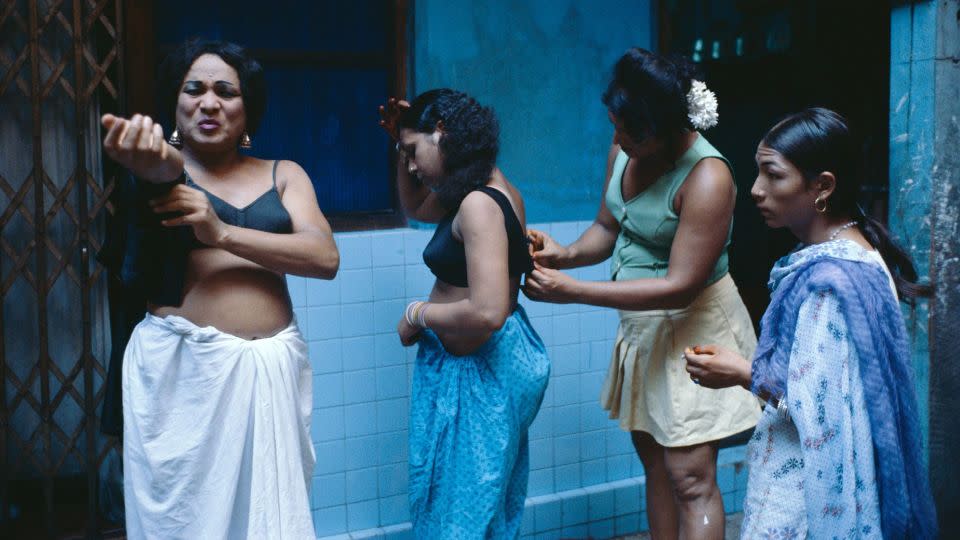
The most challenging group to befriend were the “cage girls” — women put on display on Falkland Road in small roadside rooms with window bars who suffered frequent abuse and ridicule, often from the customers they were tasked with luring. They were considered especially low class, even by other sex workers further inside the buildings, Mark recounted. They made outrageous and obscene poses and gestures to seduce customers, the photographer added, though even the most aggressive were very vulnerable.
So too were the madams who fiercely guarded their girls. One woman, who ran a brothel on Falkland Road, told Mark she had been kidnapped from her village in South India at 12 years old and taken to Mumbai. The former sex worker had gradually saved and borrowed enough money to open her own brothel. (After Mark and her husband, American documentary filmmaker Martin Bell, returned to Mumbai years later to show the woman the book, she appeared frail due to what they believed to be AIDS. The global HIV/AIDS epidemic began in 1981.)
Mark became very attached to her subjects and found it painful to say goodbye when her six weeks shooting for GEO magazine were up. “Saroja and I hugged, and she presented me with an enormous garland of flowers. We all cried” she wrote, adding: “Women waved farewell from their windows. I went by the cages, and some of the women came out to shake my hand.” Mark recalled how Champa, the trans madam, “ran across the street (saying), ‘Send me a wig from America, sister, and every time I wear it I will think of you!’”
As she had one last tea at the Olympia Café, Usha, Asha and other friends gathered around and the photographer began to cry. “You shouldn’t weep,” Mark recalled Asha saying. “You should say goodbye with your head up and proud and then leave.” She walked Mark out into the street to find a taxi and said: “You’d better not forget me.”
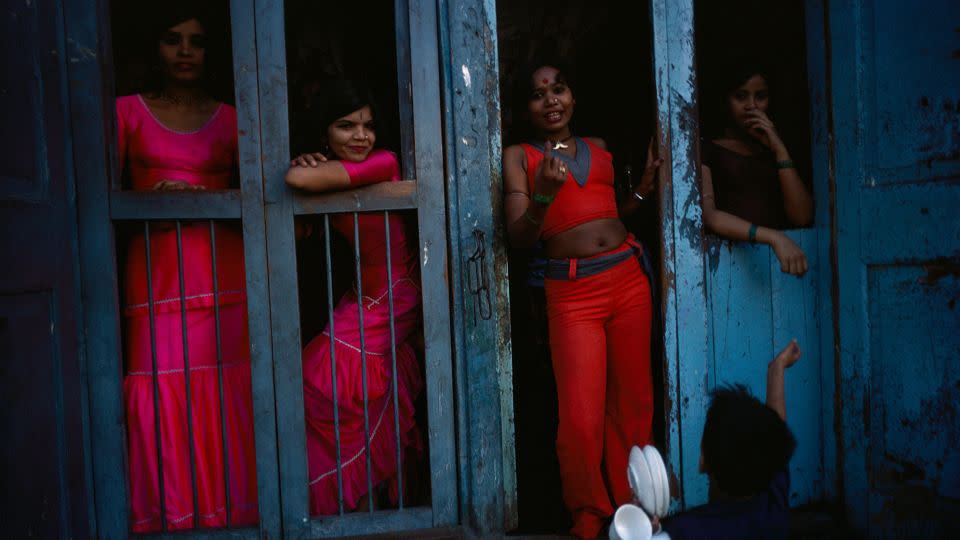
Hidden in plain sight
Mark was always interested in telling stories that wouldn’t otherwise get told, said Lue who, along with the Mary Ellen Mark Foundation, is working to republish and exhibit some of the 60,000-plus images in the photographer’s oeuvre. A retrospective of her work, including images from Falkland Road, is currently on show in Berlin, Germany until mid-January.
“She was drawn to stories from the edge… people you don’t know about,” Bell, Mark’s husband, told CNN, adding: She was able to bring those stories to a wider understanding in society. I think that’s a great thing that she did.”
For Lue, too, this is the magic of Mark’s photography — the ability to bring the often-shunned fringes of society closer to home. Her favorite images from Falkland Road aren’t the explicit ones, but shots that capture the everyday moments and connections. “The ones where you’re like, ‘Right, these are just young women getting ready for work, or just living (their) lives,’” Lue said. “They find things funny. Their life is tragic in a way but also, they live in this community.”
The photojournalist was gentle in her humanizing portrayals of marginalized communities, not only in India but across the world. From street children in Seattle to the patients of Ward 81 (the women’s security ward at what was then called the Oregon State Mental Institution), she stepped into society’s troubled fringes to forge friendships and understand the lives of different kinds of people. But despite the plaudits Mark’s images have received, an age-old question of photojournalism still surrounds her work today: Are photographers like her exploiting those less fortunate than themselves for the sake of art?
“Whether it be women on Falkland Road or women in Ward 81, they’re people and they have stories — and they deserve to be told just as much as any other story,” said Lue. “Maybe even more so because no one is going to pay attention otherwise.” She gave an example of the twins with disabilities whose sister gave consent for them to be photographed by Mark. “The sister was basically like: ‘Thank you so much for including my brothers. They’re not included in anything, because all their lives they’ve been disabled. So, they’ve never played sports or had a lot of friends or anything…. It’s really amazing for me, and for them, to be included in this, because no one’s ever included them.’”
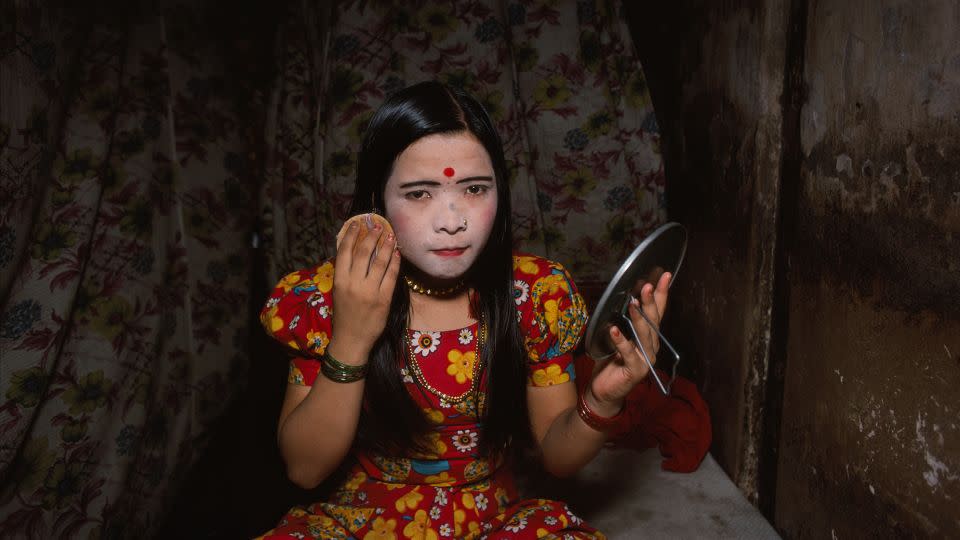
When posed the question by the New York Times magazine in 1987, Mark asked whether the poor should be ignored, saying that many of her subjects “eagerly” posed for her “precisely because they wished to be noticed at last.” She added that she never photographed anyone who refused permission.
But she was aware of the complexities, saying to the Times: “I thought, ‘How can I live with myself?’…. But you feel you have to do it,” she added, speaking to her experience photographing people starving during the Ethiopian famine of the mid-1980s.
“There’s something shameless about me,” she continued “And I think all documentary photographers that actually do come back with those pictures — there’s something shameless about all of us…. You feel guilty because these people have really given you something incredible. No photographer can do anything without people letting them take something from them.”
Falkland Road, meanwhile, continues to be a red-light district, but the wider world has changed in many ways since Mark visited in the 1970s. In an afterword to a previous reissue of her book, written in 2005, Mark said: “Today, no magazine would sponsor a project like ‘Falkland Road.’ The real everyday world is — for the most part — no longer seen in magazines. The only documentary photography we see is of war, disaster and conflict. (Almost) everything else has been replaced by fashion and celebrity photography.”
“Access to the explicit and personal world of Falkland Road would be much more difficult today because the world has been connected by the internet and cable television and everyone is much more aware of the power of media. I often wonder how the women of Falkland Road would react to me if I approached them now. Would they be afraid to be labeled or sensationalized? Would they ask me for money? They never did before.”
The reissued “Falkland Road: Prostitutes of Bombay,” published by Steidl, is available now.
For more CNN news and newsletters create an account at CNN.com

